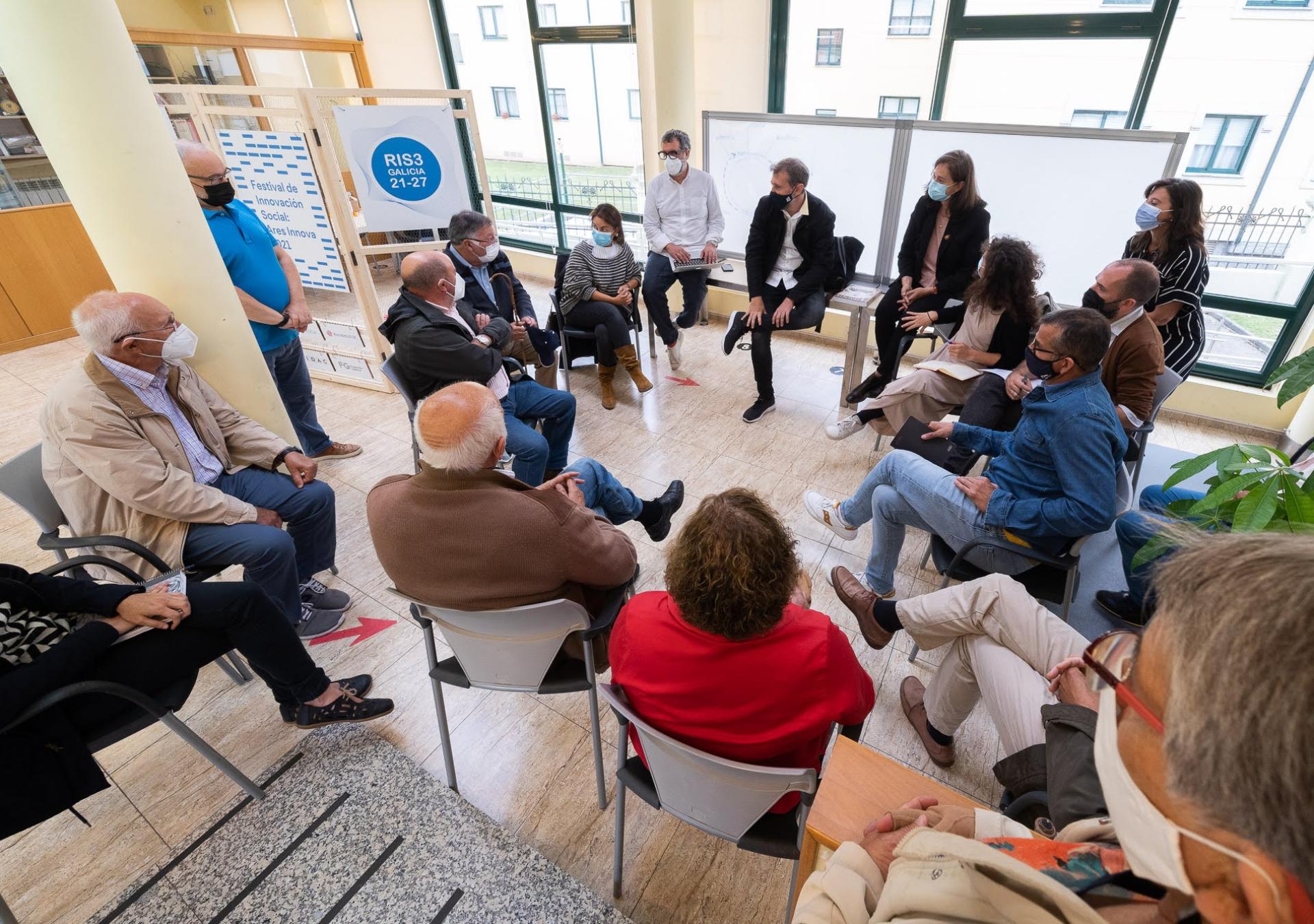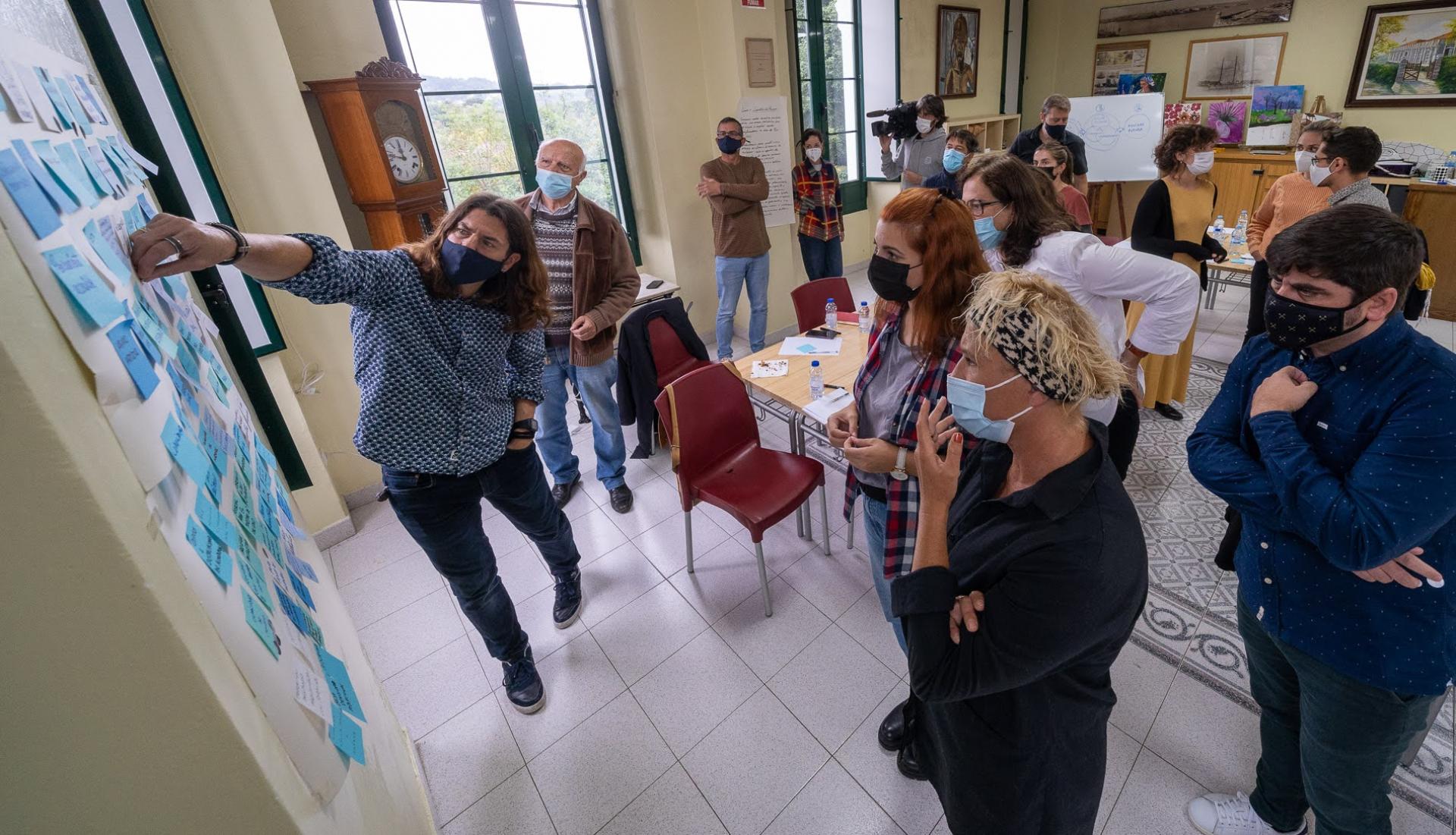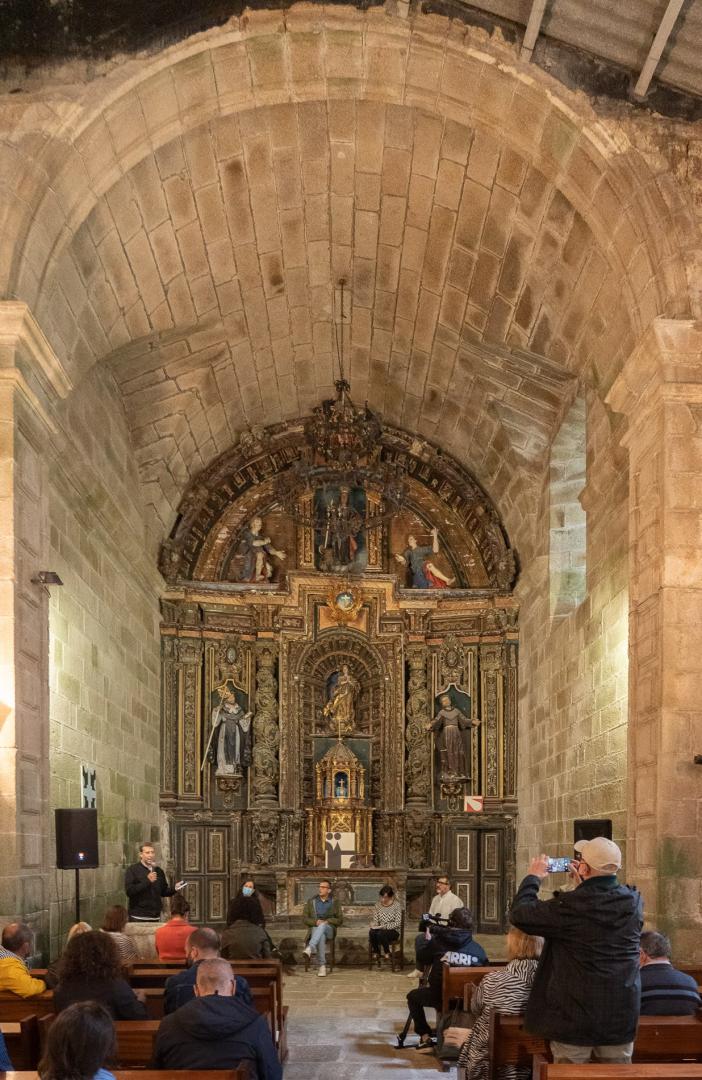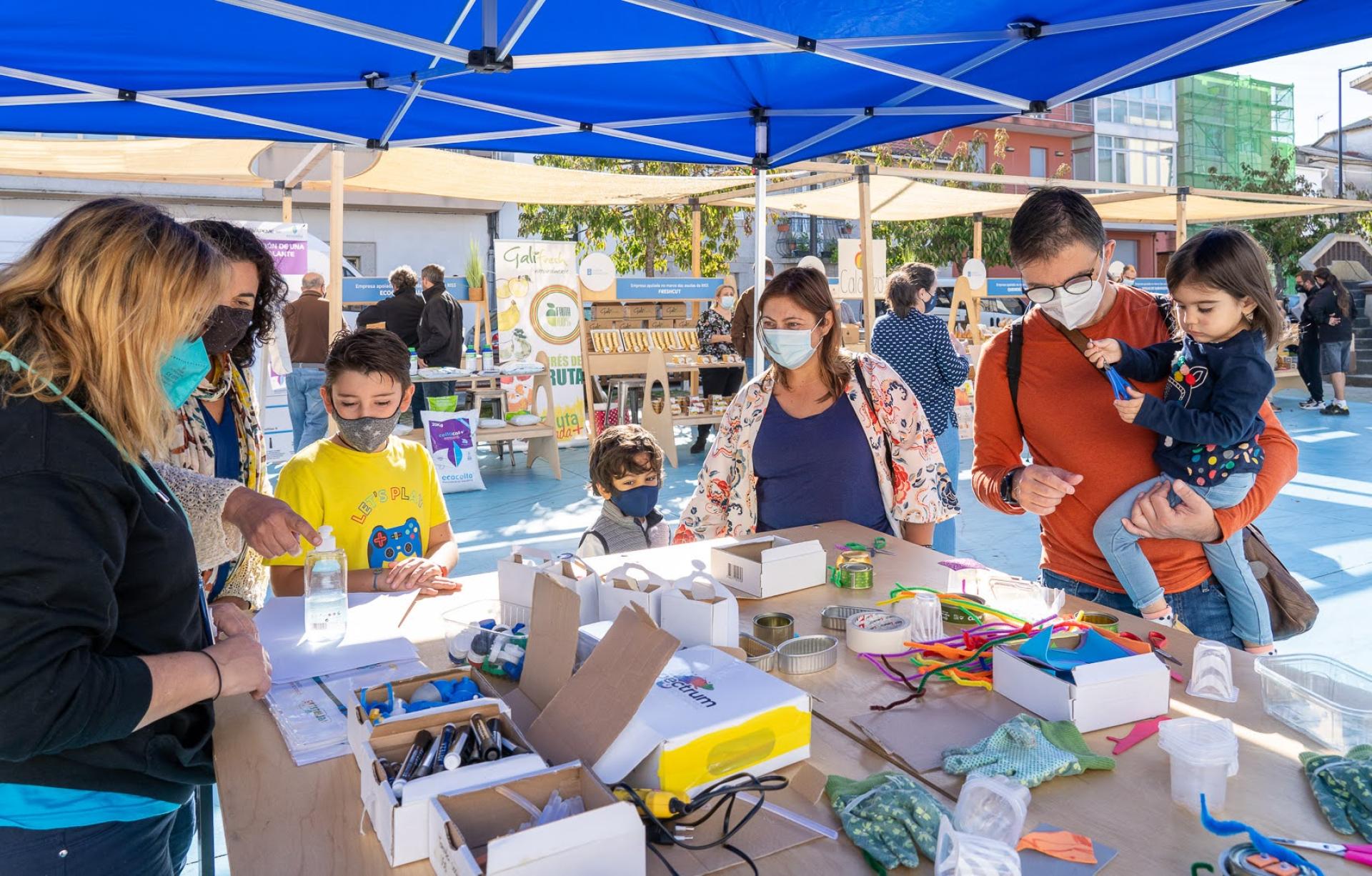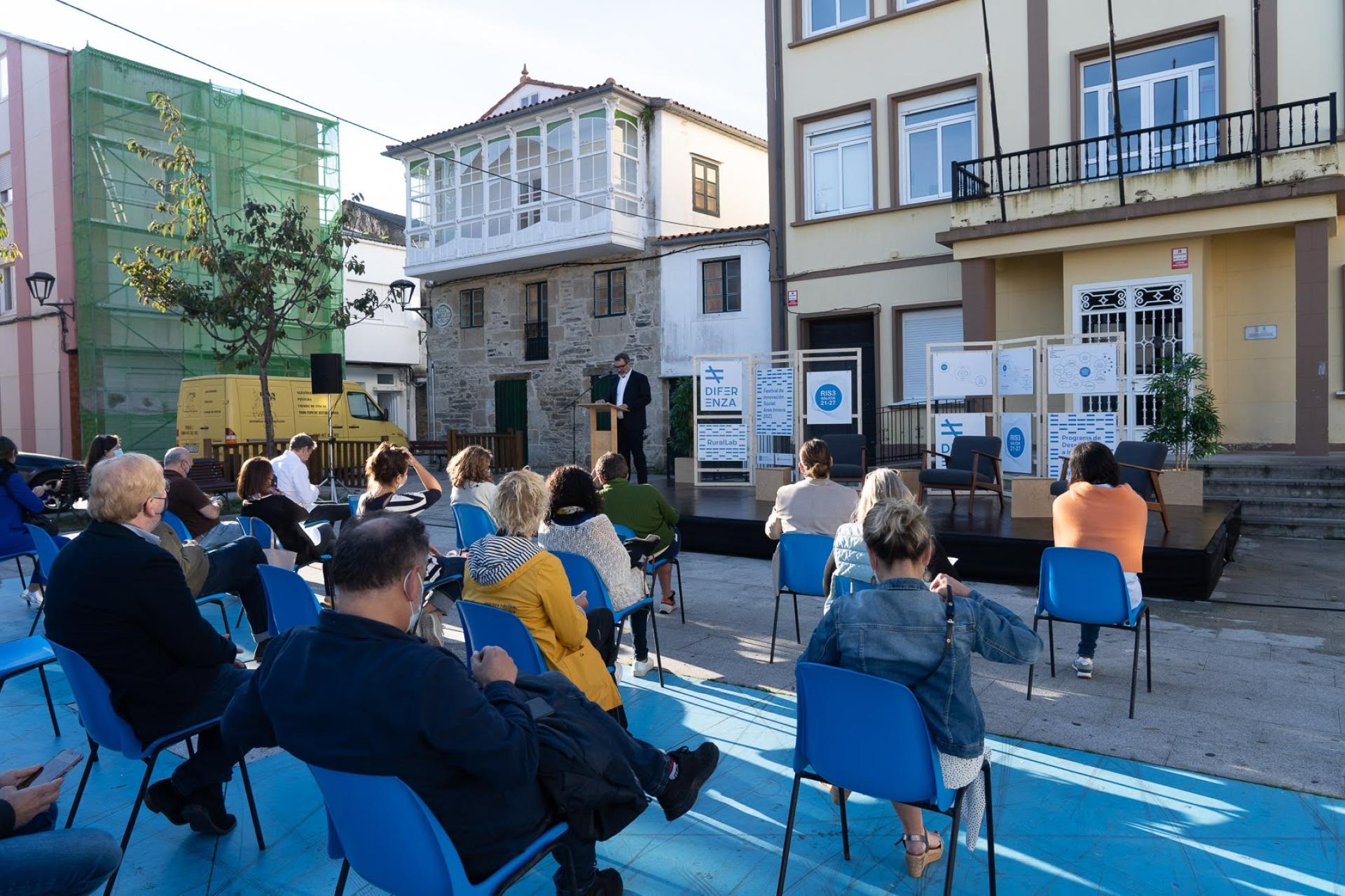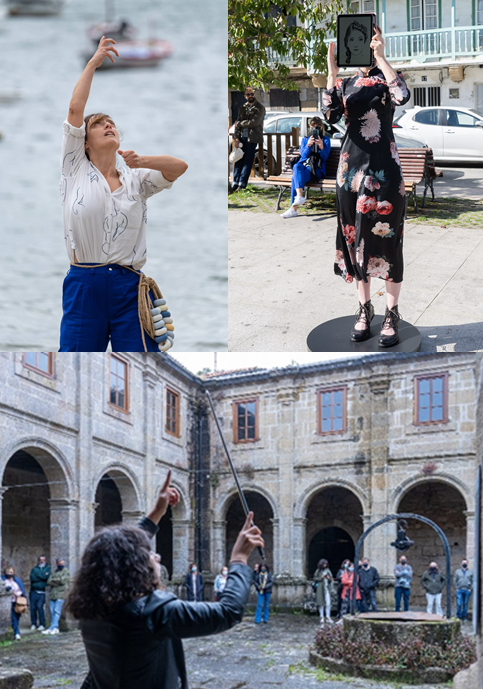Ares Innova 2021
Basic information
Project Title
Full project title
Category
Project Description
Ares Innova aims to define an image of the future for the inhabitants of the rural towns of northwestern Spain in which it has been carried out, characterized by the aging of the population, high rates of youth unemployment and the relevance of fishing, tourism and agriculture. In a celebration mood, it launched a joint reflection process between administration, professionals and civil society to define global challenges based on local needs and create the sense of belonging
Geographical Scope
Project Region
Urban or rural issues
Physical or other transformations
EU Programme or fund
Which funds
Description of the project
Summary
Ares Innova was developed in the coastal towns of Ares, Redes and Montefaro, in the north of Galicia (Spain) with the aim of developing an image of the future for the inhabitants of the area, characterised by a progressively ageing population, high rates of youth unemployment and an economy based mainly on fishing, tourism and agriculture.
The festival included a full programme of activities aimed at promoting collective creation processes and joint reflection on local solutions to global economic, social and environmental challenges. Through the application of methodologies for the generation and exchange of ideas, it has fostered that companies, entrepreneurs, civil society organisations, designers, artists, scientists and the local and regional public administration work together on issues such as the relevance of creating jobs and new opportunities from resources linked to the sea and the territory (economic challenges); the search for options to improve health and quality of life, active ageing and the inclusion of disadvantaged groups (social challenges); and the identification of ways to tackle climate change and the depletion of natural resources (environmental challenges). All of this was integrated into the process of drawing up the RIS3 2021-2027 Smart Specialisation Strategy for Galicia, in which citizen participation was promoted through an open consultation and an exhibition of good practices. The Festival allowed the Galician RIS3 involve the society for the first time.
It involved expert/citizen debates, concerts, exhibition, actions with artists, sustainability workshops and creative residencies. All these activities highlighted the value of local intangible heritage and the role of popular knowledge in generating solutions for the future. They contributed to create a sense of belonging and attachment to the territory, involving local collectives in the definition of sustainable alternatives to reinforce the local economy.
Key objectives for sustainability
The environmental challenges are one of the main points of Ares Innova, set out with the aim of addressing the global problems of climate change and resource depletion and offering innovative solutions in the field of sustainability and circular economy, based on the socio-economic and geographical reality of Ares, Redes and Montefaro. Thus, attention was paid to the predominance of tourism, the fishing and agro-livestock industries, the presence of a significant area of trees, or the relevance role of alternative energy sources. Consequently, the thematic areas dealt with were Forestry, including property reorganisation, CO2 sink, FSC exploitation, animal and plant exploitation, fire extinction and prevention; and Renewable Energies (energy transition) such as wind or marine energy.
A co-creation methodology was defined and implemented with the participation of different local groups and professional profiles in the definition of the challenges and solutions through public forums, design thinking workshops, creative activities (performance, poetic actions, concerts) and workshops for families. These activities, based on the combination of design, art, culture and innovation in a celebratory mood, made possible to work collectively on the use and exploitation of resources linked to the forest and the sea, ways to achieve sustainable tourism, the recovery of natural heritage, the relevance of the landscape and the reuse and recycling of waste.
The festival was very well received thanks to a programme very close to the real needs of citizens and the inclusion of recreational and participatory activities. It has been a very useful tool to 1) weak up an environmental consciousness in society, especially in young people, 2) pave the way towards a significant transformation based on reconnection with nature. Based on this experience, a working methodology has been designed that can be transferred to other areas of Galicia and even Europe.
Key objectives for aesthetics and quality
The festival was organised in the frame of the Design for Innovation and Sustainability Programme - DIFERENZA, of the Galician Innovation Agency of Xunta de Galicia. It is a pioneering instrument committed to strategic design as a key element for the social and economic transformation of the region, by promoting different working lines: consolidation of a design ecosystem for innovation; financial support for the design of new products, services or business models; actions for improving the visibility of design professionals; and the construction of multidisciplinary co-creation groups to solve some challenges.
In this context, Ares Innova aims to introduce design and creativity techniques to jointly imagine solutions to the economic, social and environmental challenges in today's societies. It seeks to promote the most aesthetic aspect of the area while enhancing and disseminating its cultural identity based on design and creative processes that lead to the improvement in the local economy.
The organisation of the creative residencies was fundamental for this more aesthetic purpose. In these, a group of design experts explored, in collaboration with local citizens and local collectives, the possibilities of design, art, science and the creative economy in the implementation of new sustainable uses of the territory. This group was made up of the strategic designers Alberto Barreiro, Manuel Vázquez and Stef Silva, the artist and designer Christian García Bello, the cultural manager María Lorenzo, the creator Verónica Moar and the artist María Roja.
The interaction with designers and artists fostered creative and imaginative thinking that has led to the proposal of transformative solutions based on the binomial utility and beauty.
In addition, aesthetics was present in the locations where the activities were organised, selecting places with special artistic value such as the Monastery of Santa Catalina de Montefaro or the Indian building of the "Alianza Aresana".
Key objectives for inclusion
The activity to promote the inclusion of groups with difficulties in accessing services, infrastructures, or economic opportunities is among the social challenges addressed by Ares Innova. In the case of the towns where the festival has been developed, these groups are mainly older people, young people and the long-term unemployed, due to the demographic and socio-economic characteristics of the area (ageing population, delay in accessing to the labour market, unequal distribution of the population in the territory to the detriment of rural areas).
Different local groups and professional profiles organised in working groups animated throughout co-creation methodologies, discussed new ways of connection and involvement with the environment, options to improve the quality of life in rural areas, and the search for transformative solutions for active ageing. Creative alternatives to unemployment and measures to keep population in the rural area were analysed in the forums dedicated to economic challenges, in which new ways of creating employment by taking advantage of the resources linked to the territory and the sea were analysed. The long-term unemployed, the young unemployed and young entrepreneurs, social action organisations and organisations for the elderly participated in these groups. In addition, an important role was assigned to the older people in the activities aimed at enhancing and building the cultural, artistic and intangible heritage of the area, in which the need to create spaces and networks for interaction between generations and the transmission of popular knowledge of the elderly was highlighted.
The participation of the local public administration in the working groups has been key to guarantee the viability of the measures discussed. Based on this experience, a methodology has been defined to transfer to other areas of Galicia (new actions are planned in two rural locations) and Europe (Horizon Europe proposal).
Results in relation to category
Ares Innova aims to highlight the value of the territory, its benefits for the local communities that inhabit it, to generate a sense of belonging, keep people and contribute to the development of the rural areas. It has been designed by and for the citizens, based on the socio-economic and environmental reality of the towns in which it was carried out:
- Organisation of activities in public locations of relevance for the neighbourhood (Municipal Library, Monastery of Santa Catalina de Montefaro, Redes beach, Constitution Square). New uses have been shown for these places, designed as forums for exchange, contributing to the creation of community
- Collaboration with the RuralLab project of the DIDAC and Gabeiras foundations, with the Ministry of Culture and MediaLab Prado, for the organisation of creative residencies. Designers and artists discussed with local residents about their tangible and intangible heritage, its value for the territory and the definition of sustainable and innovative solutions for the future
- Highlighting the local natural resources linked to the territory and to the sea. Identification of their potential for solving the challenges discussed
- Highlighting intangible heritage, the relevance of local tradition and how this knowledge can generate employment and wealth, launching a regenerative process, very necessary for the territory
- Identification of new business models based on natural resources, popular tradition and the art/culture connection
The event seeks to build bridges between the different members of the local community, inviting a collective reflection among them. A wide range of local organisations (environmental associations, housewives, rural women, fishermen's, cultural associations, trade groups) has been involved. An important communication campaign was carried out to ensure their participation in the cultural and artistic activities, due to their importance for social interaction and the creation of a sense of belonging
How Citizens benefit
Ares Innova is a social innovation initiative that seeks to generate transformative ideas based on participatory processes involving all stakeholders (public sector, businesses, civil society organisations, population in general). To achieve this participation, it was decided to collaborate with RuralLab, an innovation project for rural areas with important links to the main actors in the area. In addition, a mapping was made of the most representative entities of the residents in the municipalities of Ares and Redes, which were contacted to explain the objectives and dynamics of Ares Innova and invite them to participate actively. Among others, they included trade associations, cultural, social and inclusion entities, housewives' organisations, rural women and environmental organisations.
The initial work with RuralLab and the first contacts with local civil society made possible to collectively design the programme of the Festival based on their priorities and topics of interest. This was a key element to achieve the participation and involvement of local actors of all ages and in all their diversity in the activities and, therefore, to implement the co-creation methodology designed for the definition of the challenges and the identification of possible solutions. Thus, all the workshops, working groups and dialogues included the active participation of citizens who shared their concerns and vision on the issues addressed. This collective discussion undoubtedly enriched the outcome of the sessions. It allowed the points of view of experts from different disciplines to be brought together with the real needs of the inhabitants. The result of this exchange was the joint definition of solutions that attend the everyday problems and seek to improve the quality of life of civil society.
Physical or other transformations
Innovative character
The main innovative components of the project are:
- Design is the core element of sustainable transformation and innovation processes launched by Ares Innova, it allows to imagine and define solutions to the economic, social and environmental challenges, favouring the enhancement of aesthetics over merely functional uses.
- Multidisciplinary approach that includes very different competences, knowledge and experience, from science to art, design to public management, architecture and technology.
- Participatory approach based on the implementation of co-creation methodologies and the involvement of civil society and individuals: young people, the elderly, housewives, fishermen, businesses, traders, families, forestry managers, environmental associations, social inclusion organisations...
- Promotion of the sense of belonging and community, seeking moments of celebration in public spaces, of expression and exchange of ideas.
- Contribution to the definition of the Smart Specialisation Strategy of Galicia RIS3 2021-2027, a pioneering initiative to foster a collective transformation of Galicia through social innovation processes.
Learning transferred to other parties
Ares Innova has been launched as a pilot project in the frame of the Design for Innovation and Sustainability Programme-DIFERENZA. It is an initiative that test one of the lines of action of this programme: the implementation of design in social and business innovation, the empowerment of rural areas and the promotion of new complementary ways of life.
It was born with the intention of implementing new ways of transforming the reality of local communities based on participatory and co-creative processes in which small-scale experiences address global problems by applying the values and principles promulgated by the NEB.
The methodology designed for Ares Innova has been reformulated based on the results of this first initiative, improving some of its components and enhancing others that have worked well. The dialogue with all the participants, both experts and professionals who have guided the discussions, as well as groups that have contributed to the co-design, and the general public; has been a key element. Two new actions to be carried out in Galicia during the year 2022 are currently being planned.
In addition to its implementation in other areas at regional level, the first steps have been taken to transfer it to European level. The Galician Innovation Agency, promoter entity of Ares Innova, has acceded to the Galician Bauhaus Agreement led by SERGAS. It has participated in the proposal submitted to the HORIZON-MISS-2021-NEB-01-01 call, in which the Agency plans to transfer and test the effectiveness of the Ares Innova methodology in other European regions. Likewise, the Agency is promoting an Erasmus Plus project to create the professional profile of a rural innovator, whose function would be to apply co-creation dynamics based on the Ares Innova experience. Finally, alliances are being studies with other entities at national level such a COTEC Foundation, to share the knowledge acquired and transfer the lessons learnt.

